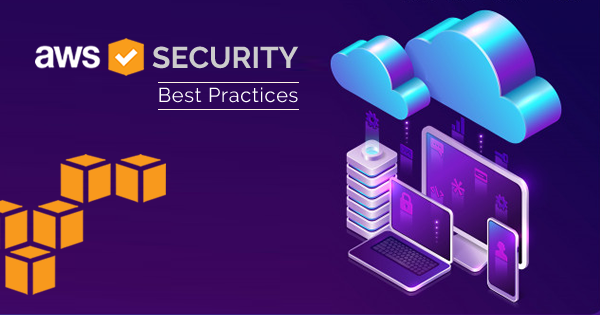Introduction
In today’s rapidly evolving digital landscape, where cloud computing and DevOps methodologies are driving innovation, ensuring robust security practices is paramount. This article delves into the crucial aspects of security best practices in AWS and DevOps, offering insights and strategies to fortify your cloud infrastructure. By implementing these practices, you can confidently navigate the challenges of the modern digital environment while safeguarding your data and applications.
Security Best Practices in AWS and DevOps
Security is not a one-size-fits-all approach; rather, it’s a combination of well-thought-out strategies, advanced tools, and continuous vigilance. Let’s explore the key security best practices to adopt in AWS and DevOps:
Identity and Access Management (IAM)
Incorporating a strong IAM strategy is the cornerstone of cloud security. By defining roles, permissions, and access policies, you can ensure that only authorized personnel have access to resources. Utilize AWS Identity and Access Management (IAM) to manage user identities effectively.
Encryption Everywhere
Data encryption is non-negotiable. Employ encryption mechanisms for data at rest and in transit. AWS Key Management Service (KMS) facilitates seamless encryption key management, while SSL/TLS protocols secure data during transmission.
Infrastructure as Code (IaC) Security
Implement security measures early in the development cycle using IaC tools like AWS CloudFormation. This ensures that security controls are applied consistently across your infrastructure.
Secure Continuous Integration and Continuous Deployment (CI/CD)
Automate security checks within your CI/CD pipeline to identify vulnerabilities early. Leverage tools like AWS CodePipeline and AWS CodeBuild to integrate security seamlessly into your development process.
Network Security and Isolation
Implement Virtual Private Clouds (VPCs) to create isolated network environments. Use security groups and Network Access Control Lists (NACLs) to control inbound and outbound traffic, reducing the attack surface.
Logging and Monitoring
Enable comprehensive logging and real-time monitoring using AWS CloudTrail and Amazon CloudWatch. Detect and respond to security incidents promptly by analyzing logs and setting up alerts.
Multi-Factor Authentication (MFA)
Enforce MFA for all users accessing AWS resources. This additional layer of security significantly reduces the risk of unauthorized access, even if credentials are compromised.
Regular Security Audits and Assessments
Conduct routine security audits and assessments to identify vulnerabilities and misconfigurations. Utilize AWS Trusted Advisor and third-party tools for a comprehensive evaluation.
Data Backup and Recovery
Regularly back up your data and create automated disaster recovery processes. AWS offers services like Amazon S3 and AWS Backup to ensure data availability even in unforeseen circumstances.
Least Privilege Principle
Follow the principle of least privilege to restrict users’ access only to the resources necessary for their roles. This minimizes the impact of a potential breach.
External Link: Learn more about IAM best practices
Security Best Practices in AWS and DevOps: FAQs
Q: How often should security audits be conducted?
A: Security audits should be conducted at least annually, with additional assessments after significant changes to your infrastructure.
Q: Can I use third-party security tools in AWS?
A: Yes, AWS supports integration with various third-party security tools to enhance your cloud security posture.
Q: What is the Shared Responsibility Model in AWS?
A: The Shared Responsibility Model outlines the division of security responsibilities between AWS and the customer. While AWS secures the infrastructure, customers are responsible for securing their applications and data.
Q: Is encryption automatic in AWS?
A: AWS offers tools like Amazon S3 Default Encryption, which can automatically encrypt objects upon storage, ensuring data security by default.
Q: How can I ensure compliance with industry regulations?
A: AWS provides compliance resources and documentation for various regulatory standards, allowing you to align your security practices with specific requirements.
Q: What’s the significance of DevSecOps?
A: DevSecOps integrates security practices into the DevOps workflow, ensuring that security is an integral part of the development and deployment processes.
Conclusion
In the dynamic landscape of cloud computing and DevOps, security remains a top priority. By adopting these security best practices in AWS and DevOps, you can fortify your cloud infrastructure against potential threats.
From identity management to continuous monitoring, each practice plays a vital role in creating a secure environment for your applications and data. Remember, security is an ongoing effort that requires vigilance and adaptation to stay ahead of emerging risks.








